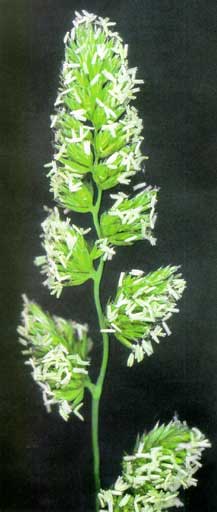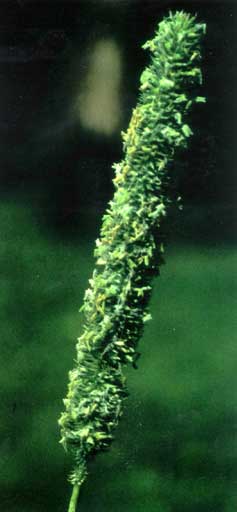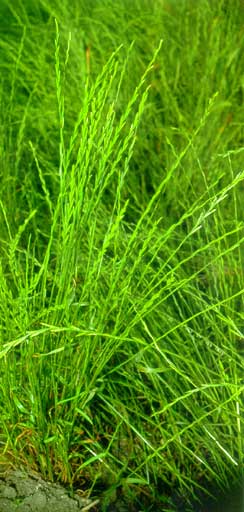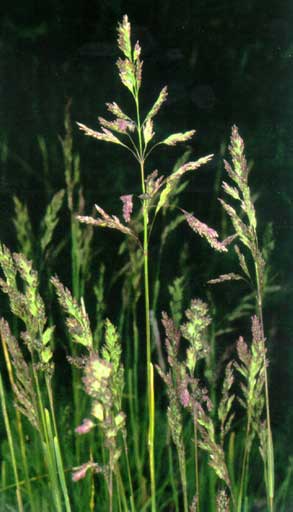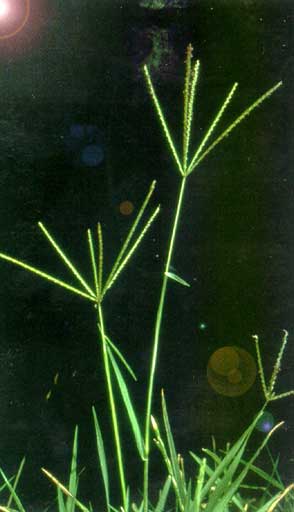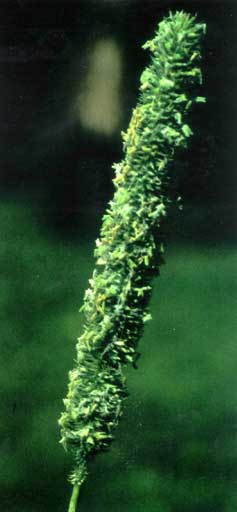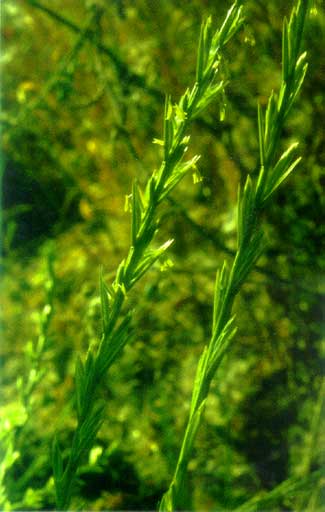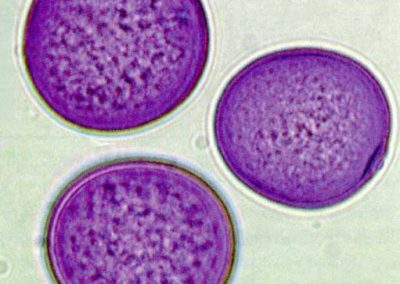Grasses
The botanical family of Poaceae is one of the most numerous, and it comprises almost 700 genus and about 12,000 species. It is calculated that Grasses account for about 20% of plant life on the planet. They are the basic food source for animals (pastures are basically poaceae) and also a basic food source for humans (wheat, barley, rye, corn, oats, rice, sugar cane,… are also poaceae).
In the pictures you can see some of the wild grasses most commonly producing allergy in Spain and also in Europe. Among them, stand out Cocksfoot (Dactylis glomerata), Timothy grass (Phleum pratense), Ray grass (Lolium perenne), Kentucky blue grass (Poa pratensis), Lawn (Cynodon dactylon), etc., all of them easily identifiable in ditches, meadows, embankments, etc.
Pollen from these plants normally have a diameter of about 20-45 µm (this small size permits them to penetrate quite deep into the airways). They have a spherical shape, granulated surface, and one single pore. There is a very frequent cross-reactivity between pollens from different genus of Poaceae, and so when a patient becomes allergic to a specific plant of this family, he will usually be allergic to the majority of pollens from other Poaceae.
There exists a notable relationship between pre-seasonal rainfall, and levels of grass pollen in the air. So, when it rains a lot from approximately October to March in the Northern hemisphere (depending on the geographic zone), it will be highly probable that during the following spring concentrations of Grass Pollen in the air will also be very high.
Because of the huge number of Poacea species (each one with its particular flowering time), and because of wide variations depending on weather conditions, it is possible to detect Poaceae pollens in the air in the course of 6-10 months of the year. However, in Europe the most important peak is normally during April, May and June.
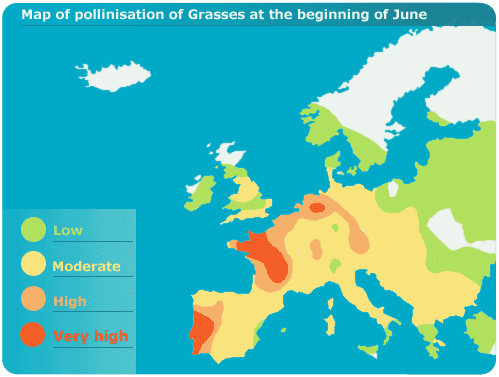
It has been calculated that with a concentration of over 10-50 grains of pollen in the air, patients with allergy to these pollens can notice symptoms, although this widely varies between patients, depending on:
- The particular severity of the allergy of each patient.
- The concomitance or not of another allergy to the pollen of other plants that can pollinate during the same time.
- The weather conditions
- The level of exposure (i.e. cutting the lawn,…)
** Photos (c) Menarini, S.A. – Hospital Clínico de Barcelona

